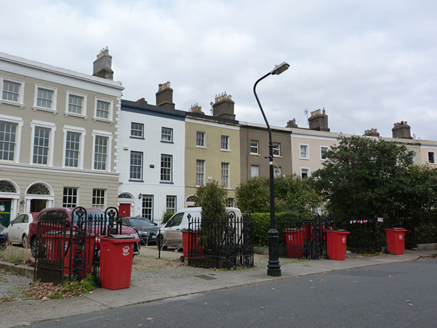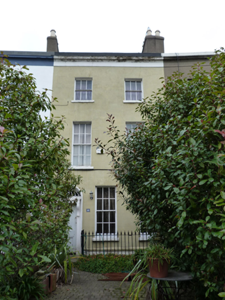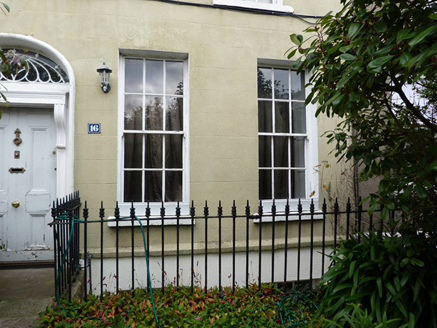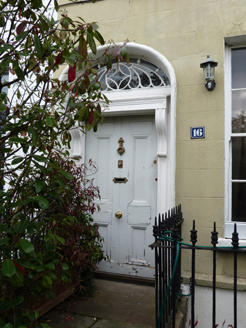Survey Data
Reg No
50120112
Rating
Regional
Categories of Special Interest
Architectural, Artistic
Original Use
House
In Use As
House
Date
1790 - 1795
Coordinates
318018, 236464
Date Recorded
02/11/2017
Date Updated
--/--/--
Description
Terraced two-pile three-storey house over raised basement, built 1792 as one of twenty-five, with three-bay ground floor and two-bay upper floors, and having single-storey return to west end of rear. M-profile pitched slate roof, having rendered chimneystacks with clay pots to east and west ends, hidden behind rendered parapet with moulded render cornice, and eaves course, and with flat roof to return. Ruled-and-lined rendered walling with cut granite plinth course above rendered basement walling. Square-headed window openings with masonry sills and timber sliding sash windows, three-over-three pane to top floor and six-over-six pane below to front and rear elevations, with some timber panelled shutters and with round-headed stairs windows and tripartite windows to rear elevation. Elliptical-headed doorway with moulded render surround, carved timber doorcase comprising panelled pilasters with fluted brackets, supporting panelled frieze, stepped timber cornice and teardrop fanlight, and timber panelled door, approached by granite step and limestone platform, with decorative cast-iron railings. Decorative cast-iron railings on granite plinth wall to basement area. Garden to front, bounded by decorative cast-iron single-leaf gate having matching railings on carved limestone plinth wall to footpath and to east and west. Yard to rear.
Appraisal
This house is part of a significant architectural set-piece, Marino Crescent, one of the few Georgian crescents in the city. The façade is enlivened by the inclusion of a delicate teardrop fanlight that adds artistic interest to the facade. The retention of salient features, such as the timber doorcase and some early timber sash windows, contributes to the architectural heritage character. The crescent comprises houses of similar parapet heights and fenestration patterns, having larger houses to the centre and west end. The house was built in the last decade of the eighteenth century to take advantage of the sea views, prior to land reclamation projects associated with the enlargement of Dublin Port. The houses were built by Charles ffolliot, reputedly to spite Lord Charlemont, blocking the vista from Marino House, and were locally known as Spite Crescent as a result.







